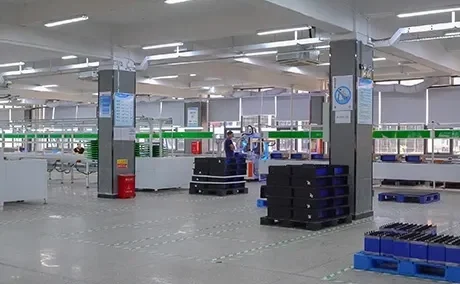There are 3 main advantages of aging testing.
- The first advantage is to make the infiltration of the electrolyte better, which is conducive to the stability of the performance of the lithium battery pack;
- The second is that after the aging of the active substances in the positive and negative electrode materials, some side effects can be accelerated, such as gas production, electrolyte decomposition, etc., so that the electrochemical performance of the lithium battery pack can be quickly stabilized;
- The third is to conduct consistent screening of lithium battery packs after aging for a period of time. After formation, the voltage of the battery cell is unstable, and its measured value will deviate from the actual value. The voltage and internal resistance of the aging battery cell are more stable, which is convenient for screening batteries with high consistency.
Lithium-ion batteries, like all batteries, degrade over time and with use. This degradation can have a number of negative effects, such as reduced capacity, increased internal resistance, and reduced ability to deliver high currents. As a result, it is important to understand how a particular battery will behave as it ages so that its performance can be properly predicted and managed.
One of the primary reasons for conducting an aging test on a lithium-ion battery is to determine its capacity fade rate. Capacity fade is the decrease in a battery’s ability to store and deliver energy over time. This can be caused by a number of factors, such as the accumulation of defects in the battery’s active materials, the formation of a solid electrolyte interface (SEI) on the surface of the electrodes, and the loss of electrochemically active material through processes such as lithium plating. By measuring the capacity of a battery at regular intervals over its lifetime, it is possible to determine how quickly its capacity will fade and how much capacity will be lost at a given point in time.
Another important reason for conducting an aging test is to understand how a battery will behave under different operating conditions. For example, a battery’s capacity fade rate may vary depending on factors such as the temperature at which it is used, the depth of discharge, and the rate at which it is charged and discharged. By testing a battery under a range of different conditions, it is possible to identify the conditions that are most likely to cause degradation and to develop strategies for minimizing the effects of aging.
In addition to capacity fade and performance under different operating conditions, an aging test can also provide information about other aspects of a battery’s behavior. For example, an aging test can be used to determine a battery’s impedance, which is a measure of the resistance it presents to the flow of electric current. This is important because a battery with high impedance will have a lower ability to deliver high currents, which can be a problem in applications such as power tools and electric vehicles. By measuring impedance, it is possible to identify batteries that are likely to perform poorly under high-current conditions and to develop strategies for improving their performance.
Another factor that can be determined through an aging test is a battery’s calendar life, which is the length of time that a battery can be stored without significant loss of capacity. Calendar life is important because many applications require batteries to be stored for extended periods before they are put into use. By testing the calendar life of a battery, it is possible to determine how long it can be stored without losing significant capacity and to develop strategies for maximizing its useful life.
Overall, the aging test is an important tool for understanding the behavior of lithium-ion batteries over time. By providing information about capacity fade, performance under different operating conditions, impedance, calendar life, and other important characteristics, the aging test can help manufacturers and users optimize battery performance and prolong the life of their batteries.
